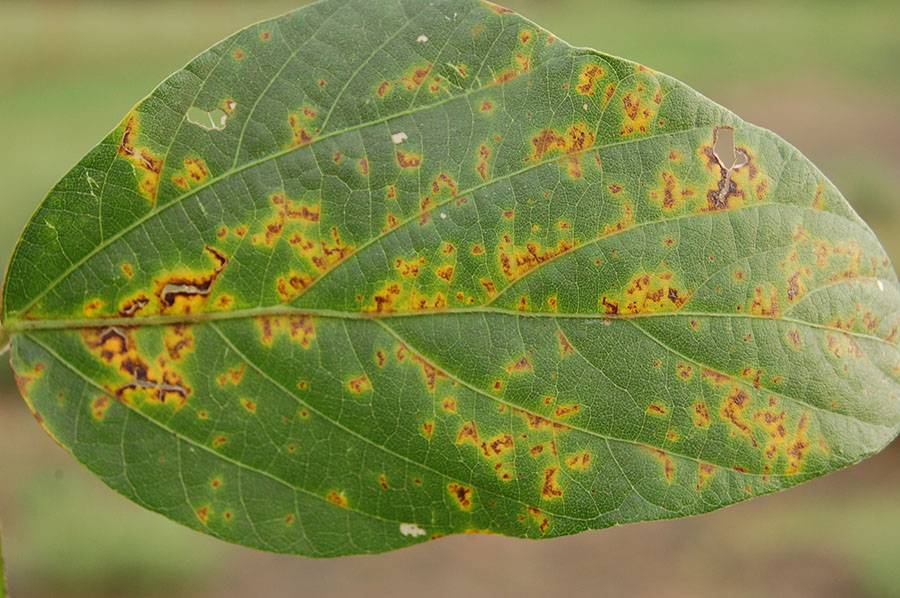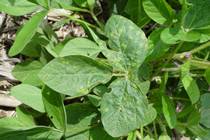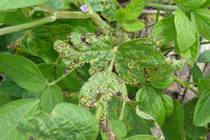Soybean
Bacterial Blight

Pseudomonas Syringae
Bacterial Disease

Pseudomonas Syringae
Bacterial Disease

Pseudomonas Syringae
Bacterial Disease

Pseudomonas Syringae
Bacterial Disease

Pseudomonas Syringae
Bacterial Disease
Bacterial blight (Pseudomonas savastanoi) of soybeans is typically an early season disease, which over winters in the field on plant residue. Initial infection of soybeans occurs when wind or splashing water droplets from plant residue on the soil surface to the leaves carry bacterial cells. The bacteria enter the plants through stomata and wounds on leaves. In order for infection to occur, the leaf surface must be wet. Seedlings may be infected through infected seed.
Brown spots on the margins of the cotyledons characterize plants infected early in the growing season. Young plants may be stunted and if the infection reaches the growing point, they may die. Symptoms in later growth stages include angular lesions, which begin as small yellow to brown spots on the leaves. The centers of the spots will turn a dark reddish-brown and dry out. A yellowish-green "halo" will appear around the edge of water soaked tissue that surrounds the lesions. Eventually the lesions will fall out of the leaf and the foliage will appear ragged. Generally young leaves are most susceptible to blight infection. Lesions can also occur on the pods causing the seeds to become shriveled and discolored. However, seeds usually do not show symptoms.




